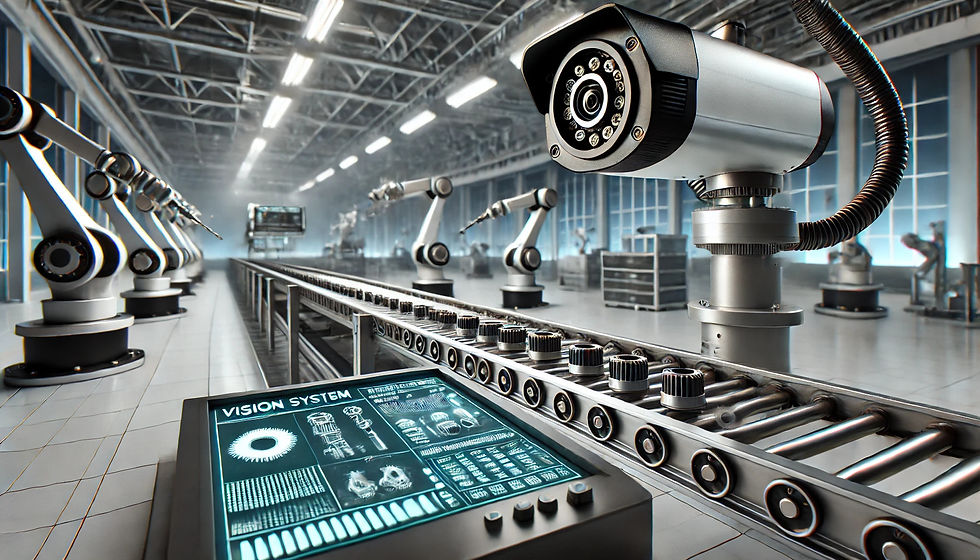Elevating Quality Assurance: The Role of Automated Inspection Equipment
- jeksonvision128
- Oct 18, 2023
- 2 min read
In today's fast-paced and dynamic manufacturing environments, the importance of quality assurance cannot be overstated. In numerous industries, ensuring the quality and consistency of products is essential to meet customer expectations and regulatory requirements. Automated inspection equipment has emerged as a game-changing solution to enhance and streamline the quality assurance process. In this article, we explore the pivotal role that automated inspection equipment plays in elevating quality assurance across various sectors.

The Essence of Quality Assurance
Quality assurance is a cornerstone of modern manufacturing. It encompasses a series of processes, protocols, and checks designed to ensure that products meet predefined standards and specifications. This is not just about meeting customer expectations; it's also about compliance with industry regulations and maintaining a reputation for delivering high-quality goods.
The Limitations of Manual Inspection
In the past, quality assurance primarily relied on manual inspection processes. While these methods were effective to some extent, they had several limitations:
Subjectivity: Human perception can be subjective, leading to inconsistencies in inspection results.
Speed: Manual inspection is time-consuming and may lead to production bottlenecks.
Scalability: As production scales up, manual inspection becomes increasingly impractical.
The Rise of Automated Inspection Equipment
The emergence of automated inspection equipment has revolutionized quality assurance. These systems leverage advanced technologies, such as machine vision, artificial intelligence, and robotics, to carry out inspections with precision and consistency. Here are some key aspects of the role played by automated inspection equipment:
1. Speed and Consistency:
Automated inspection equipment can rapidly process a high volume of products, ensuring both speed and uniformity in inspection criteria.
2. Defect Detection:
These systems are designed to detect a wide range of defects, including variations in size, shape, color, surface imperfections, and more.
3. Data Accuracy:
Automated systems provide objective and accurate inspection results, reducing the likelihood of human errors and the associated costs.
4. Efficiency and Cost Savings:
Automation significantly accelerates the inspection process, reducing labor costs and the potential for production delays.
5. Regulatory Compliance:
Automated inspection equipment helps businesses meet stringent regulatory requirements by maintaining comprehensive documentation of the inspection process.
Real-World Applications
Automated inspection equipment is deployed across various industries, including:
Manufacturing: Ensuring the quality of products on production lines, from automotive components to consumer electronics.
Pharmaceuticals: Verifying the integrity of pharmaceutical products, from tablets and capsules to medical devices.
Food and Beverage: Inspecting food items for quality, safety, and compliance with regulations.
Aerospace: Ensuring the precision and safety of aircraft components.
Packaging: Verifying the accuracy and integrity of packaged goods before distribution.
The Future of Quality Assurance
As industries continue to evolve and embrace advanced technologies, automated inspection equipment will play an increasingly vital role in maintaining and elevating quality assurance. Advances in artificial intelligence, connectivity, and data analytics will further enhance the capabilities of these systems. Real-time monitoring and predictive maintenance will become more widespread, allowing for proactive quality control and process optimization.
In conclusion, automated inspection equipment is the linchpin of quality assurance in today's manufacturing landscape. It ensures product quality, efficiency, and compliance in an increasingly complex and competitive business environment. It's not just about meeting quality standards; it's about elevating them to new heights.



Comments